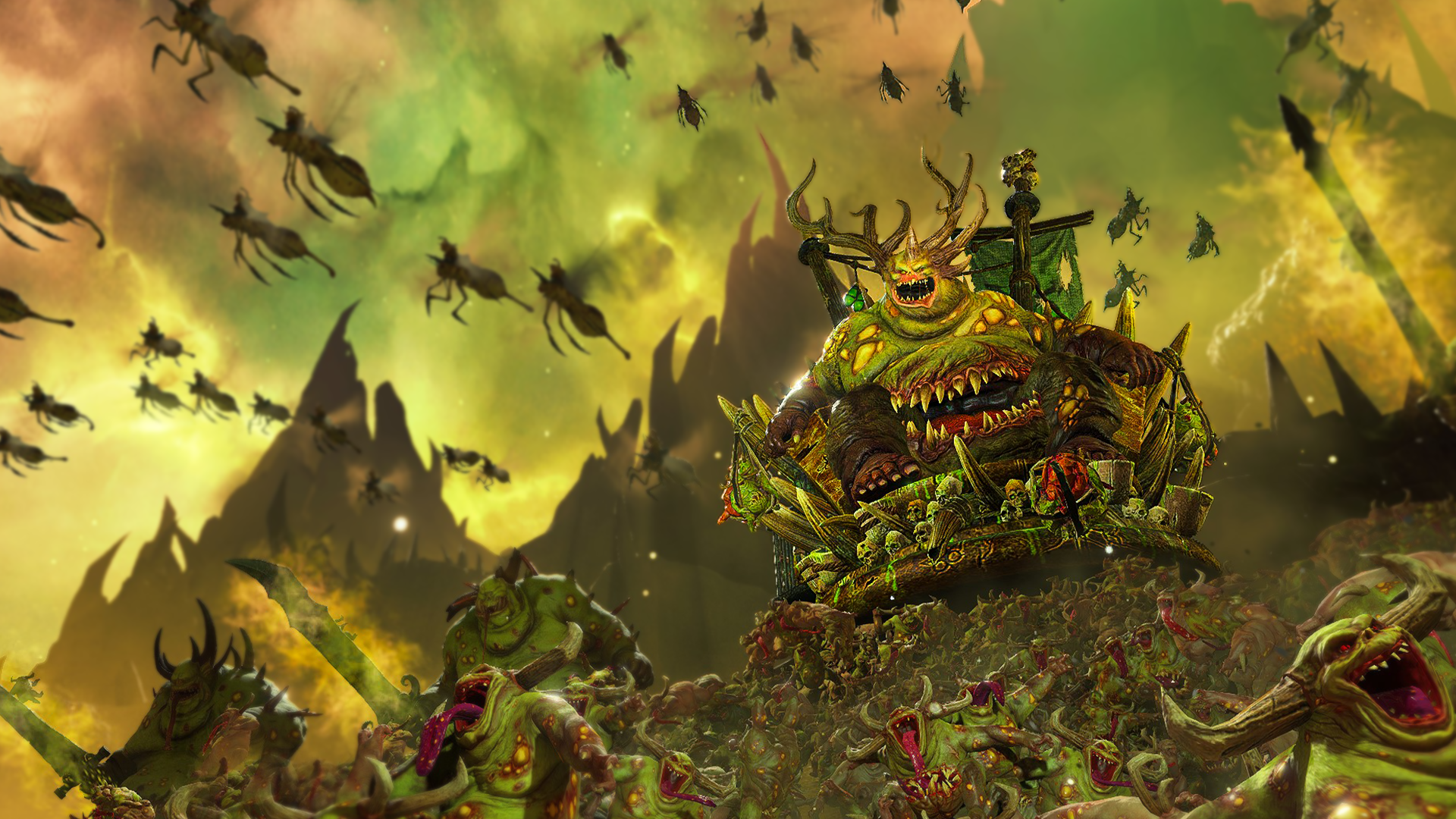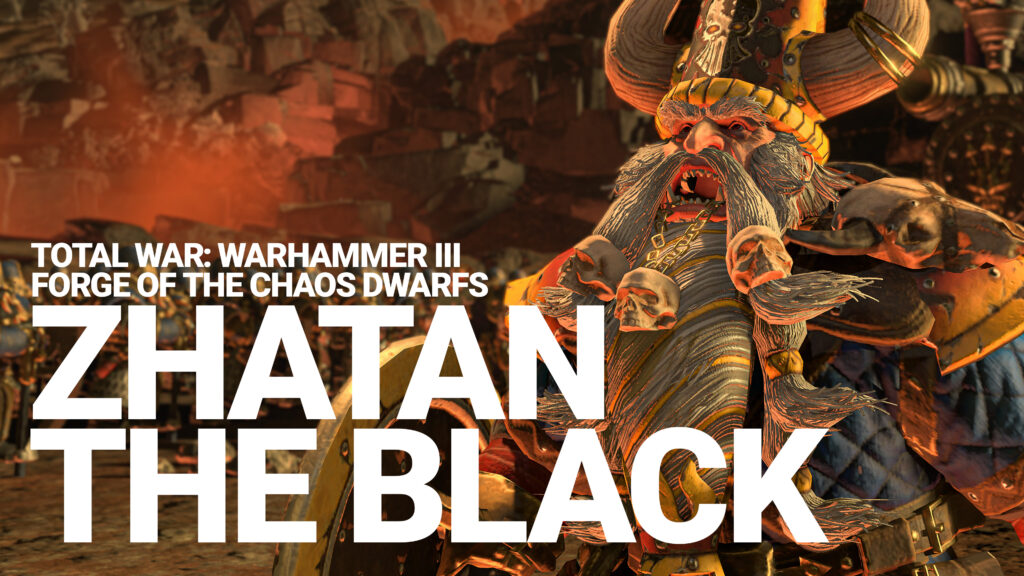
FEATURE FOCUS #2: Damage (Part 1)
Greetings!
In our first Feature Focus we took a close look at the impact of Elevation in Total War. In this piece we’ll be examining ‘damage’ in similar detail, and it’s a hefty topic to say the least – so much so, in fact, that we’re breaking it down into two parts.
In Part 1 we cover some of the fundamental aspects of damage in Total War, as a clear understanding of these is the key to ensuring that you’re making the correct tactical decisions in battle.
Ready? Tool up!
DAMAGE 101
At the core of all combat interactions, there are two types of damage: ‘Base’ and ‘Armour-Piercing’.
Base damage is affected by armour, while Armour-Piercing (AP) ignores it.
Damage is dealt in discrete chunks through weapon strength, missile weapon strength, explosions and even vortices. All of these damage methods contain an amount of both Base and AP damage, which is carefully balanced and configured across units and abilities within the game.

To help us talk about the various steps of a damage calculation, we’ll run a practical test with a unit of Bretonnian Foot Squires charging a unit of Empire Spearmen.

When the Foot Squire entity swings, there’s actually a fair amount of maths going on, so we’ll work through the process step by step.
First, we must determine if the attack actually hits. This starts with determining what the effective hit chance of the attacker is. The base chance for an attack to hit is 35% before modifiers, so let’s get modifying.
We add the Foot Squires melee attack of 26.
The Spearmen are small entities, and Foot Squires have 12 bonus vs Infantry, so we add a further 12.
The Foot Squires are charging, and this is the first attack being made during a charge, so we can assume all of the units’ charge bonus is added as well for a further 18.
NOTE: Further attacks will have a lower bonus from the charge as this value decays linearly over 13 seconds after the successful charge. For example, they would only gain 9 if the next attack was made exactly 6.5 seconds after the charge.
35 + 26 + 12+ 18 = 91%! Huge!
Now we subtract the defender’s melee defence. Empire Spearmen have 34 melee defence, so…
91 – 34 = 57% A bit less huge!
57 is the target number for our hit chance test.
It’s worth noting that the final hit chance can never exceed 90% or be below 8%. Another modifier that could apply here is the flank and rear penalties, which kick in when the attacking entity attacks from the left, right or rear quadrants of the target entity, respectively, causing their effective melee defence for the attack to be multiplied by 0.6 or 0.3.
The game now randomly picks a number between 1 and 100. If the number is equal to, or lower than, the final calculated hit chance, the hit is considered successful, and we move to resolving damage.
First, the damage of the attack before modifiers is 35. Split across Base and AP like so:
9/26.
This is roughly a 77% Armour-Piercing ratio, and this relationship is important because it informs what further modifiers will do.
As above, the Spearmen are still small entities and the Foot Squires have 12 bonus vs infantry, which also applies here to the damage.
The attack is going to do an additional 12 points of damage, with a 77% AP ratio adding 3.085 to Base damage and 8.914 to Armour-Piercing.
NOTE: We’ve rounded the numbers to three decimal points for your sanity! The game quantifies six decimal points during these calculations.

We now also factor in the charge bonus, adding a further 18 points of damage, again at a 77% AP ratio. Another 4.628 to Base damage, and 13.371 to Armour-Piercing damage.
That’s a lot of numbers, but the net result is 16.714 Base damage and 48.285 Armour-Piercing, for a total of 64.913 damage! This is where we apply the modifier for height advantage/disadvantage outlined in the previous blog, but we’ll keep it clean here and fight on levelled terra firma.
Alas, the Spearmen do wear at least a bit of armour. Their armour value is 30, which means that they can reduce the Base portion of the attack by a percentage value between 15% and 30% (between 0.5x and 1x the armour value, with rolling above 100% being functionally identical to rolling 100%.) A roll of 100% means the attack does no base damage whatsoever, as there is no minimum.
For the sake of this test, the Spearmen have rolled a value of 27.4667 against this attack, a respectable result. This reduces the 16.714 Base damage down to 12.123; a measly four points shaved off this heavily piercing attack!
Without any resistances to calculate, we’ve arrived at the final step, where the damage is applied to the target entity and where, mercifully, all these pesky decimals get rounded off. With a final value of 12.123 base damage (rounding to 12) and 48.285 Armour-Piercing (rounding to 48), the attack does a devastating 60 damage to the Empire Spearmen, who have a health value of 69 per entity. Nice!
It’s worth noticing here that the Spearmen that was hit has a miniscule 9 hit points remaining, and any further attacks are likely to blow right past that. The extra damage beyond that which is needed to kill the entity being hit is lost to the void and goes nowhere.
There is, in fact, such a thing as too much damage!
A practical thing we can see here is that a charging Foot Squire is likely to kill an Empire Spearman entity in two good thwacks with his greatsword, putting out close to twice the damage he shows on the unit info panel with his opening swings.

The Spearmen who manage to strike back have their own tricks.
Despite only having Charge Defence vs Large, and therefore not being able to negate the Foot Squires charge bonus, they do have Charge Reflector. This means that when they strike the charging Foot Squires as they come within 3.9 seconds of their charge, the Spearmen will do double damage!
Unfortunately for the spearmen, they don’t really have the melee stats for this matchup. With a 31% chance to hit due to their relative attack and defence and only 6 Armour-Piercing (12 when they’re attacking the charging Squires) they’ll struggle to defeat the Foot Squires’ 70 armour. (35-70% damage reduction vs the base portion of the attack).
FIRE, MAGIC & SPELLS… OH MY
The fundamentals of damage application outlined here apply to almost all damage sources in the game, but there are a lot of different methods to deal damage, each with their own quirks, many of which we’ll cover in later blogs such as charge impacts! For today, however, we’ll cover a couple more key modifiers that come up in regular play.
First up, the three additional types a source of damage can have: Fire, Magic and Spell.
Fire Damage has two effects:
- The damage is modified by the target’s Fire Resistance or Weakness.
- The unit is given the ‘On Fire’ status for 10 seconds, which halves incoming healing.
Magic Damage has one effect:
- Physical Resistance does not apply to the damage.
NOTE: Despite a common misconception, magical attacks do not ignore armour and are treated as regular attacks for that calculation.
Spell Damage is applied by damage from lores of magic or bound spells and has two effects:
- Physical Resistance does not apply to the damage.
- Spell Resistance does apply to the damage.

Resistances come in several flavours: Fire, Spell, Physical, Missile and Ward Save.
So, let’s work our way through when and how each is applied:
- Fire Resistance is applied if the damage is flaming, and is the only resistance that can be negative, becoming a Weakness.
- Spell Resistance is applied if the damage comes from a Spell. For example, Winds, Vortexes and Magic Missiles. It does not, however, include units with Magical Attacks or when weapons are granted Magical Attacks by a Spell.
- Physical Resistance is applied to all damage, unless that damage is from a Magical Attack or a Spell.
- Missile Resistance is applied to damage from Missiles (including magic missiles like Fireballs or Doombolts) and explosions, such as the explosion of a Mortar Shell or Searing Doom Impacts.
- Ward Save is applied to all sources of damage.
When applying resistances, they are summed together. So, let’s demonstrate that with the following hypothetical. Please note that the total value of the resistances can never exceed a final value of 90%.
A particularly buff man-sized rat unit has:
- 20% Spell Resistance
- 20% Physical Resistance
- 20% Missile Resistance
- 20% Ward Save
and - -20% Fire Weakness
An Iridescent Horror casts the Blue Flame of Tzeentch Spell at this unit.
Blue Flame is a Spell, a Missile, and also has the Flaming tag.
So we apply Spell Resistance, Missile Resistance, Fire Weakness and Ward Save. Physical Resistance is ignored due to being a Spell.
20 + 20 + 20 – 20 = 40%
Despite the intimidating array of resistances, the defending unit only reduces the incoming damage by 40%, maintaining a decent chunk of its initial value.
Lovely stuff.
Goodness, is that the time?
NEXT UP
The damage is done, but the fight isn’t over.
There’s a lot left to cover, but we probably could all do with a breather following that stat attack. Next time, we’ll plunger ever deeper into this topic, looking at the specific quirks of Explosions, Vortexes and Wind effects, cracking the case of how damage is applied by Large Monsters and Lords using splash attacks, and opening the forbidden box labelled ‘Game Ticks.’
Uh oh.
Please hit us with your feedback, and we’ll see you on the battlefield!
– The Total War Team



